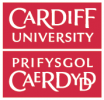© Pint of Science, 2025. All rights reserved.
Tonight Dr. Niek Buurma will talk about his robot “RπDπ” that was designed to find the best way to carry out certain chemical reactions by doing actual experiments. He will be followed by Professor Haley Gomez, who will tell us about a controversial theory stating that the dust in the universe is created by the violent death throes of stars. In the break there will be some intergalactic tunes – recognise the most and you might go home with a prize!
Robots and artificial intelligence in the chemistry lab
Dr Niek Buurma
(Lecturer in Physical Organic Chemistry)
Artificial intelligence and search are very fashionable these days, but what if you are a chemist searching for the best way the carry out a chemical reaction? We incorporate a form of artificial intelligence in custom-made robots that autonomously search for the best way to carry out a given reaction by doing real experiments. The robot contains easily available components; for example, the “brain” is a Raspberry Pi computer! Though our robot looks nothing like R2D2, it is still better in a chemistry lab, so we call it RπDπ.
How did the universe get so dusty?
Professor Haley Gomez
(Professor of Astrophysics)
Every time we gaze through a window or walk on a sandy beach, we are interacting with material made by exploding stars that burned millions of years ago. Cosmic dust grains are the building blocks of rocky planets like the Earth – as well as life itself. But where exactly does dust come from? 16 years ago, we put forward a controversial theory that dust could be made in the violent death throes of stars. I will talk about how this theory now is turning into fact.
Map data © OpenStreetMap contributors.
